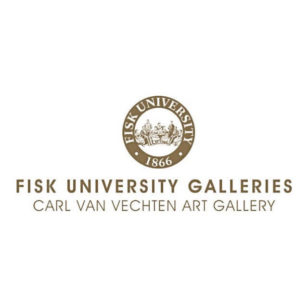INTERVIEW: ALTHEA MURPHY-PRICE
DEC. 15, 2016
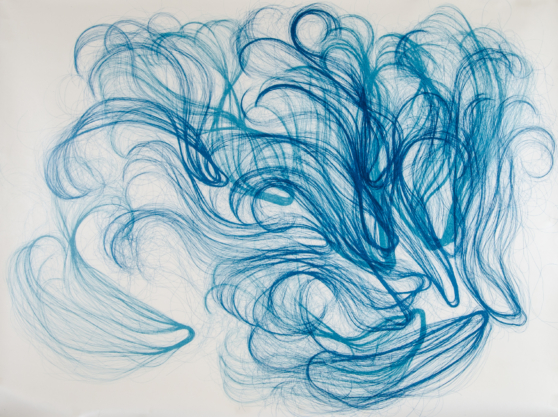
INTERVIEW: ALTHEA MURPHY-PRICE
DEC. 15, 2016
Amelia Briggs: Can you talk about your use of synthetic hair and how you got started using this material?
Althea Murphy-Price: When I first begin exploring hair in my artwork, I used only my own hair. When I did this I always felt the work was bound to my biography and I wasn’t satisfied with the way the narrative became directed at me instead of a larger discussion about identity and society. In my adolescence I wore braided extensions, so, when I first decided to experiment using synthetic hair it immediately felt natural, something clicked, the material matched the meaning I wanted to express, and now I predominately use it in my work.
Synthetic hair is fine nylon plastic fiber made to represent an idealized version of human hair. Its deceptive purpose is what I find most intriguing and what I find most indicative of a society that often seems obsessed with the superficial. It is this interest in truth or fiction that synthetic hair symbolizes for me, and that I often think about when making work.
I use hair to make both two-dimensional printed works and sculptural work. When I am making prints, I like to focus on print's imitative abilities and I use hair to make the image using a photographic process. Working sculpturally I tend to think about the hair revealing its false nature, by melting the material with heat. Then I cut from this material to reshape it.
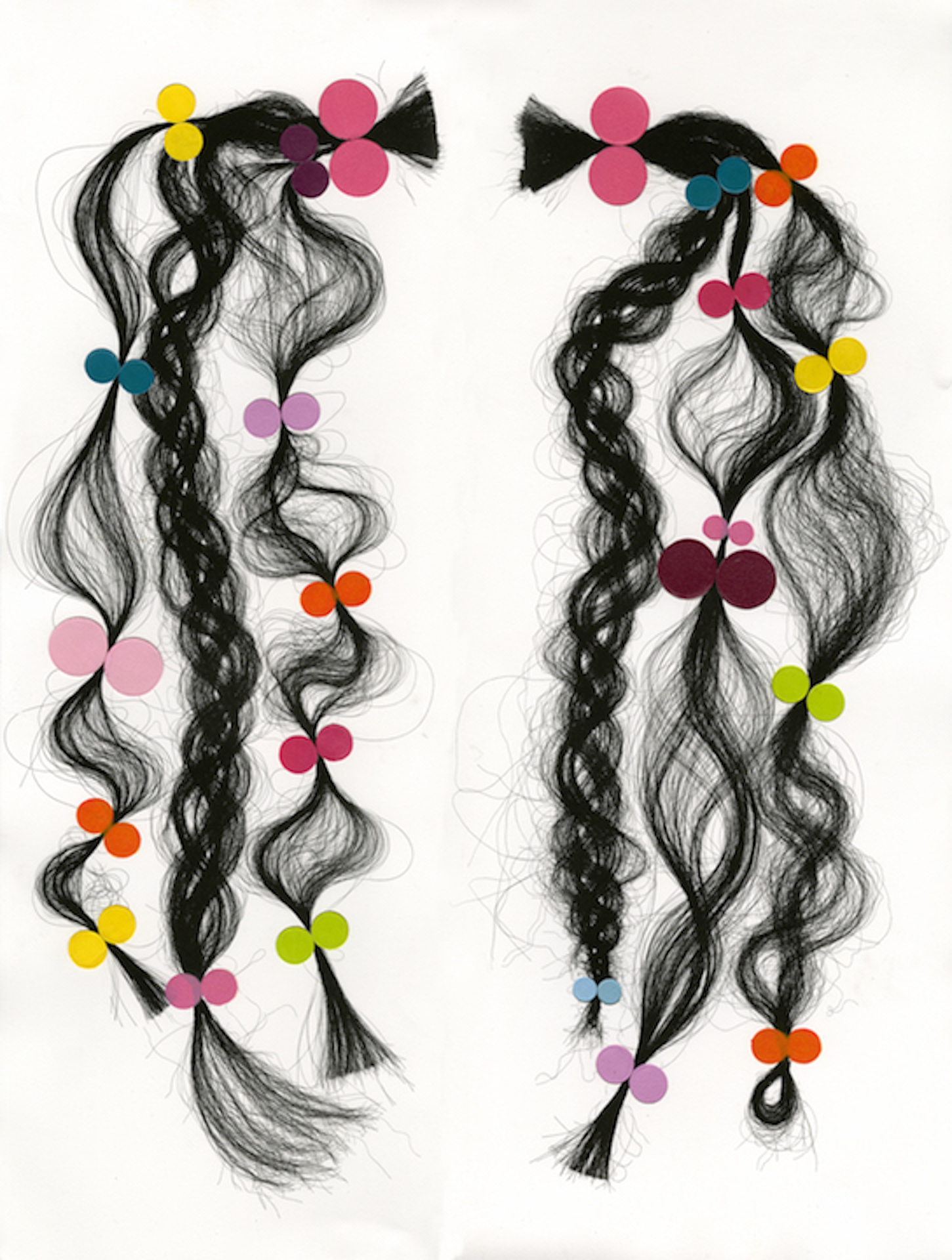
AB: I am amazed at the intricacy and precision with which you are able to sculpt hair. What is your process like?
AMP: Process is a large part of the work and the approach largely contributes to my ideas about the work. At times I feel a bit like a ‘wanna be’ hair stylist. When doing this, I want to communicate a degree of effort or labor that I associate with beauty maintenance. Much of my process is directly influenced by my personal experiences with maintaining my hair. There always exists a series of repetitive acts and making always comes with an inherited rhythm. At the heart of everything I do is a genuine love of working with my hands, a love for making and it takes many forms whether I’m working with hair or not.
Another thread in the work is texture and dimension. This fall I’ve been making collaged works on paper using cut out and punch printed elements. This process too involves a certain amount of intricacy, precision and repetition.
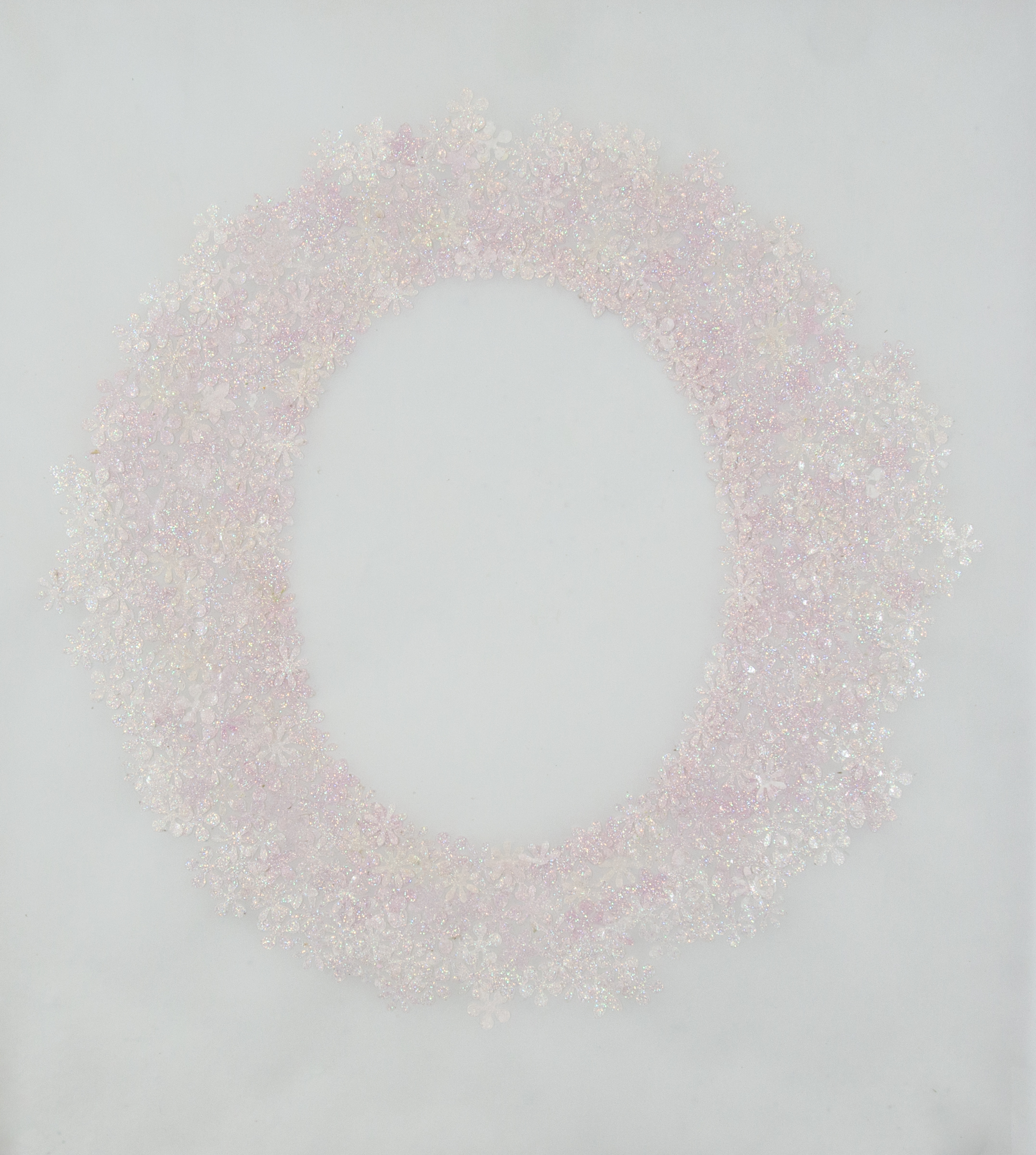
AB: I am interested in what you said about hair's deceptive purpose and society's obsession with the superficial. This immediately makes me think about our culture's use of social media and how women in particular are represented in the media. What kind of a role does that play in your work?
AMP: Yes. It plays a big role! From stereotypes to body images the media’s portrayal of women is the most influential power in our society and gravely at opposition with the positive things we say are possible for women in today’s society. I think the ramifications of this are huge and have such powerful impact that they re-shape and define self-identity. I’m particularly interested in the roles that social media platforms like YouTube play in our lives. My lens is also tinted by the element of race. I’m sensitive to the multiplicity of issues that surround women and minority communities made to feel marginalized and forced to assimilate to succeed. I’ve always been very interested in the element of disguise, mainly because this is often how beauty products work and speaks to the true nature of assimilation. Just this fall, a South African high school banned girls from wearing afros and natural hair styles and, in our own country, the federal appeals court ruled that it’s okay for employers to ban dreadlocks in the workplace. Recent new events like these remind us that some of the same issues of thirty years ago are still relevant today and we still have a ways to go.
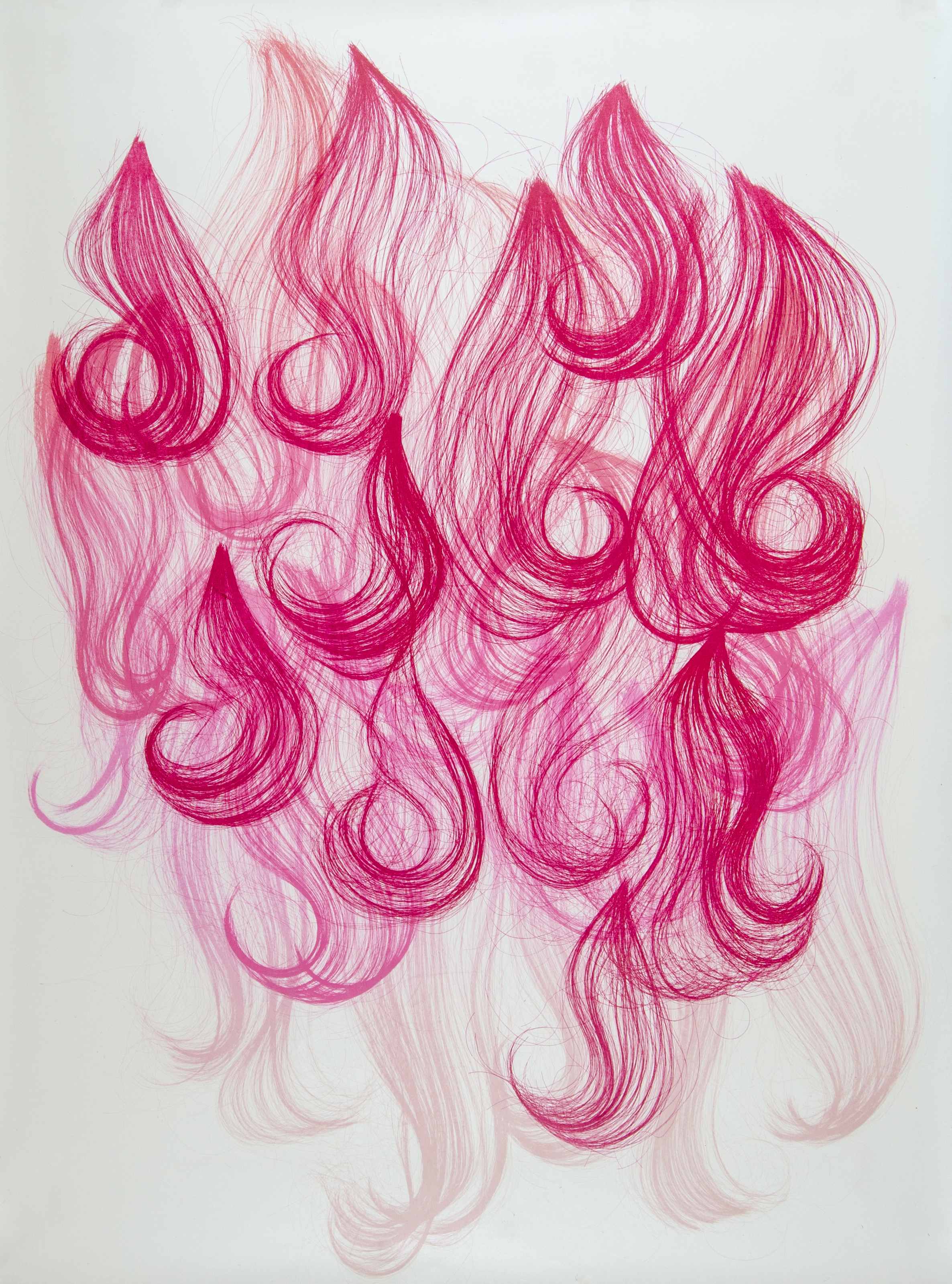
AB: Absolutely. I am also thinking about how subtle and disguised some of these enforced assimilations can be, buried under another agenda, or so engrained in our culture that some can be blind to what is really going on. I am intrigued by your work's ability to deceive. From what I have seen in images, your work is so beautiful and delicate, one might not even realize each piece is made of hair. However, each carries a weight and truth about the larger, important issues and injustices of our culture.
AMP: Yes. Sometimes I feel like my aesthetic is in the way of my desired message. Partly the reason I am so interested in how we are attached to these lures of the media is because I too find myself trapped by them. I love the linear quality of hair and the intricacy it creates. The delicacy isn’t always intended, but is a quality of the material.
AB: Tell me about your recent show at Minthorne Gallery at George Fox University?
AMP: This was an exciting show for me since it comprised primarily all new work that I was showing for the first time. In this show, I displayed both printed and unique collaged works. The show was entitled Truly. Like the title, the work was created around the idea of capturing moments of admiration, excitement and maybe disbelief. The experience of when we see something that we are enticed by, the moment of awe that creates desire.
This work is more brightly colored than my work is typically recognized for with the addition of screen-printed elements. These elements are tactile; some have flocking and all have dimension which I achieved by printing multiple layers on top of each other. (A very small printed sculpture or 3D print I might call them.) In some of this work, a screen-printed element is added to the image of a hair arrangement. These attachments look like stickers, hair ties or barrettes. The prints have a child-like quality and suggest that they could be intended for either the young or more mature.
I exhibited three large lithographs depicting hair in free-flowing arrangements that were blue, pink and blended red, orange and green.
I also exhibited two small collages, very recently made which I glued several hundred small punches together to create arrangements. In my mind, they are referencing something wearable.
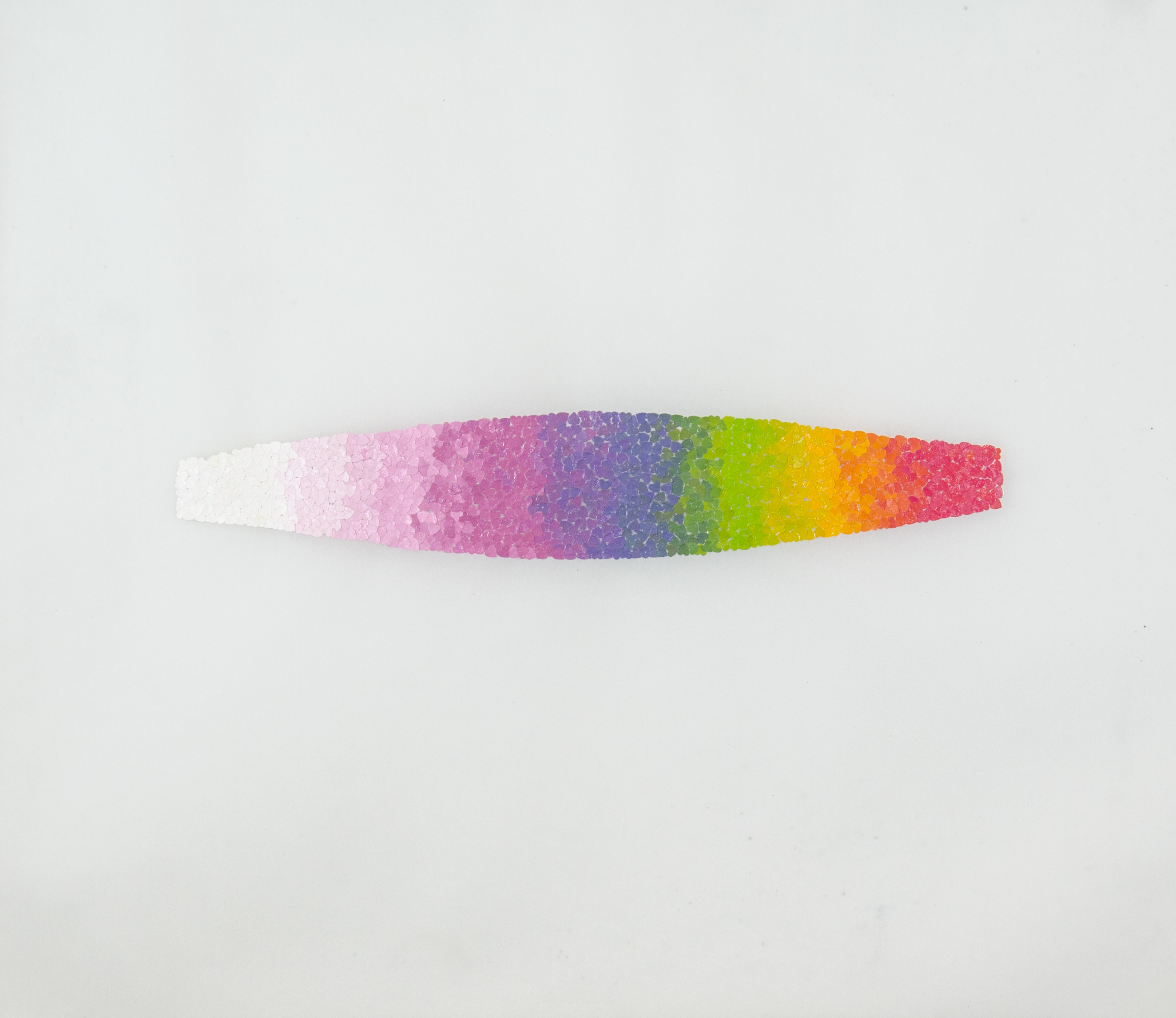
AB: In an article about your Minthorne show you stated that much of your use of hair stems from hair's relevance to Black American culture and community. I am intrigued by this statement, can you elaborate on your experience with the significance of hair?
AMP: All of my work involving hair derived from my perspective as a black woman of color. The subject is layered in issues related to historical persecution. It established that the American female beauty ideal was everything that the black American women could not attain naturally. For the most part this meant, a fair complexion, blond hair and blue eyes. To this day black women are still attempting to attain these standards to achieve success in society and popularity. Hair within black America has a tremendous relationship to community and culture and therefore is a symbol of both gender identity and race. I’ve taken much of my inspiration from the black American hair industry, that offers so many choices to adopt new appearances (or identities). Personally, I find this thrilling, funny and concerning all at the same time. I often feel torn, it is this state of mind I hope to share.

AB: You also currently have a show at Silver Place. Tell me about that show.
AMP: I was invited to participate in this exhibit by architects Tricia Stuth and Ted Shelton Co-founders and Partners of the architectural firm Curb. They asked if I would create a site-specific piece inspired by the space or its history. The small space on Silver Street is currently in transformation to be redesigned into apartment living spaces but was originally a print shop for nearly 80 years before closing its business. Before this it was a tobacco shop.
About three weeks ago, I visited the space and was immediately inspired by a large brown stain on the linoleum floor that was left there by a large rectangular floor mat that had remained there since the print shop first opened. I wanted to attempt to create a second, more decorative rug that also looked like its impression was created by time. I created a rug-like stain using iron oxide and lace fabric as a stencil. Upon first glance, many that attended the opening night didn’t recognize the piece as part of the show, they assumed it was part of the building.
It took an entire week for the piece to sit and oxidize. It was a fun project to participate in.
Also participating was Curb architect Brian Ambroziak, and artist Emily Bivens exhibiting a large interactive installation.
AB: In addition to being an artist, you are a full time professor at UT Knoxville. How has teaching affected your studio practice?
AMP: Its true! I work with some amazing students, we also have a top ranked graduate program and I’m proud to be part of it. Teaching is a constant learning process, which is great for any artist. Working with students I’m always learning more about myself. I feel very fortunate to teach in a capacity that fuels my creative practice while also encouraging future artists to realize and achieve their potential.
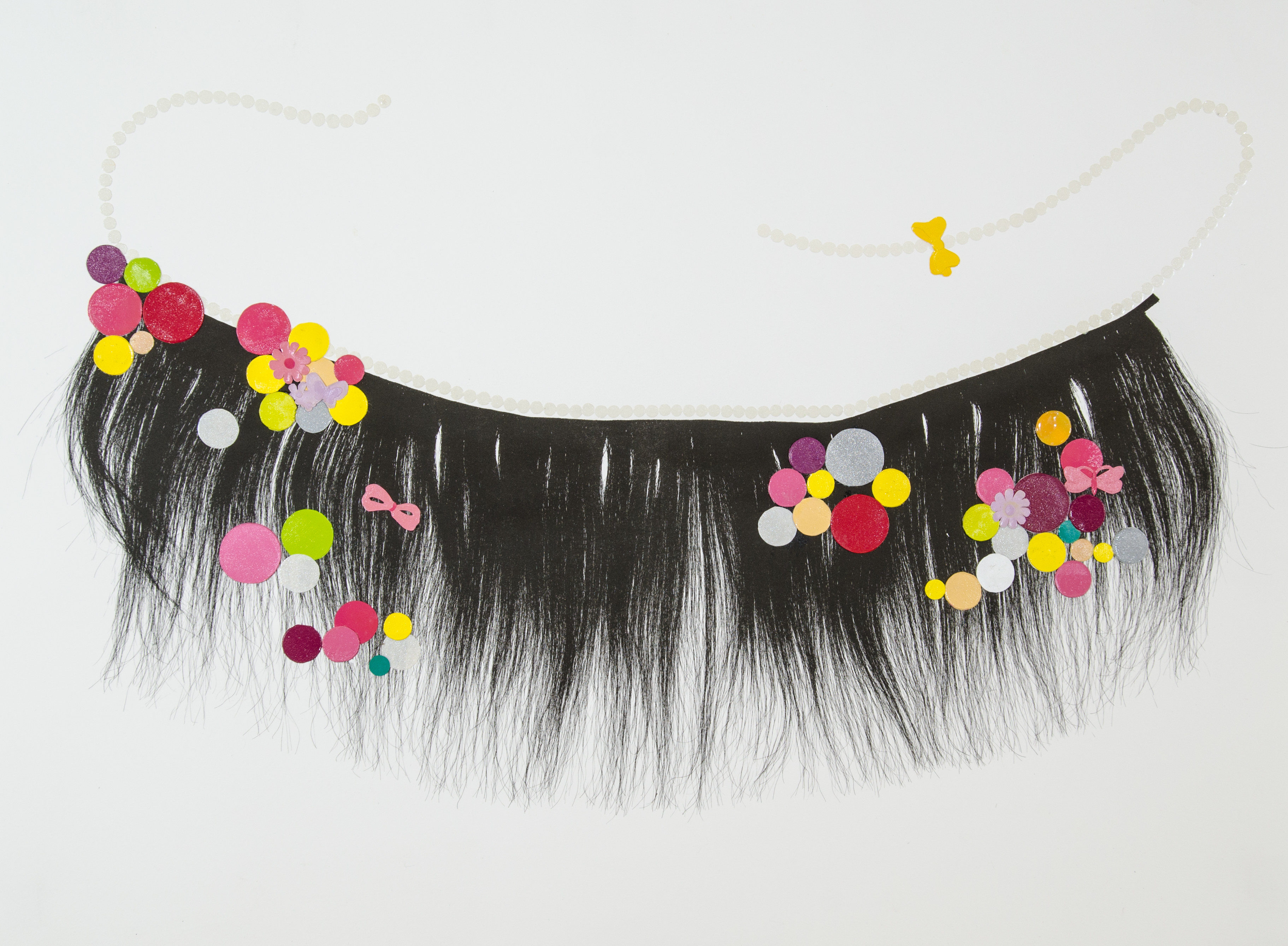
AB: What are you working on right now? What is next?
AMP: I’ve been working on a varity of different collages since August. They employ printmaking, but none of them exist as an edition.
What I imagine doing next is making wearable head forms for children that I want to exhibit as photographs. I’m sure that the works I’m creating now are getting me prepared to make this next work.
Althea Murphy-Price received her Master of Arts in Printmaking and Painting from Purdue University in West Lafayette, Indiana, and her Master of Fine Arts in Printmaking from the Tyler School of Art Temple University in Philadelphia, PA. She has presented and exhibited her work internationally and nationally in such cities as Philadelphia, PA, Chicago, IL, Baltimore, MD, Richmond, VA, St. Louis, MO, Cincinnati OH, Charleston, SC and Beijing, China. Juried and group exhibitions include the 2009 International Printmaking Exhibitions in Jingdezhen China, the 79th Annual International Print Center Competition in Philadelphia, PA, the 2007 and 2005 Boston Printmakers Exhibition and the 2009 Piccolo Spoleto Invitational Exhibition, in Charleston, SC. In addition to her exhibition record, Murphy-Price has also been an artist-in-residence at the Frank Lloyd Wright School, University of Hawaii, Hilo and The Vermont Studio Center. Her work has been featured in the 2009 Spring issue of Art Papers and the book Printmaking: A Complete Guide to Materials and Process by Beth Grabowski and Bill Fick.
Amelia Briggs is an artist and writer in Nashville, TN. She works for David Lusk Gallery Memphis and Nashville, running all things marketing. In addition to her studio practice, Amelia is in the beginning stages of co-creating a podcast.
